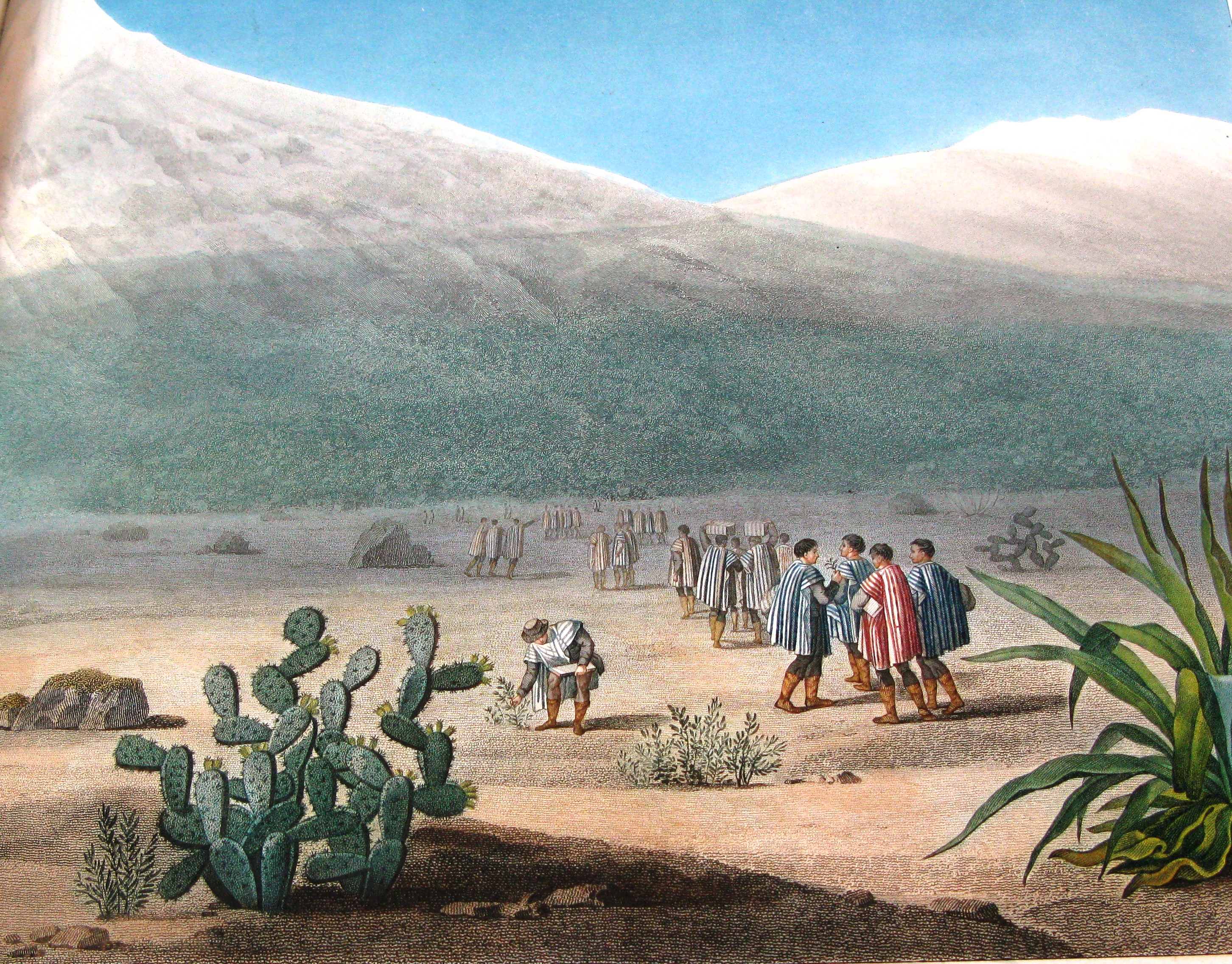The exhibition, mounted between August and October 2009, had as its aim to give an impression of the extent and universal scope of the work of the great scientist and explorer. The books displayed represented only a small part of his wide-ranging publications on geology, botany, geography, climatology, ethnography, and their various interrelations. In their turn, the 45 items formed a selection only of the holdings of CUL. (Some items of the so-called Grande édition were too large for the showcases!) The exhibition was conceived along chronological lines, but concentrated on the years of Humboldt’s great American journey (1799-1804) and the works that proceeded from it, notably Voyages aux régions équinoxiales du Nouveau Continent and Vues des cordillères et monumens des peuples indigènes de l’Amérique. A large portion of the items were in French, the language Humboldt preferred for his major scientific writings, some also in Latin, but most of his later works, including the famous Kosmos (1845-58) were in German.

Detail from a large picture in Humboldt's Voyage aux régions équinoxiales du nouveau continent (Tab.b.240)
Some of the items immediately struck the eye, such as the folio volume Receuil d’observations de zoologie et d’anatomie, open at a coloured plate of a condor, or the Essai sur la géographie des plantes, with its famous profile of the geography and botany of the Andes, a coloured version of which was used for the dust jacket of Daniel Kehlmann’s Die Vermessung der Welt (also shown). Others had interesting pull-out maps, mainly of South and Central America, indeed there was a whole section devoted to items from the Library’s Map Room. While not eye-catching, other items were extremely rare, such as Humboldt’s first two earliest works, Mineralogische Beobachtungen über einige Basalte am Rhein (1790) and Florae friburgenses (1793). Again, even a modest-looking item like Tableau statistique de l’île de Cuba (1831) contained a wealth of material on national economy.
Like all large specialised collections, the CUL holdings on Humboldt or relating to him have come from a variety of provenances. Forster’s Reise um die Welt (1778) came from the Royal Empire (later Commonwealth) Society, the work on basalt of 1790 from the University geological museum, the set of Schiller’s Die Horen (1795-97), to which Humboldt contributed, from the Beit Library, and the atlas to Kosmos was discarded by the War Office!
Trinity College was the only lender, with a specimen letter in Humboldt’s hand, from the Whewell collection.
While not able to compete with the many events surrounding Darwin in 2009, nor indeed wishing to do so, the exhibition served as a reminder that 1859, the date of Humboldt’s death, marked the end of a remarkable scientific era, as well as the beginning of a new age, with On the Origin of Species.
The captions for the exhibition were written by Professor Roger Paulin. To view these captions please click here.
